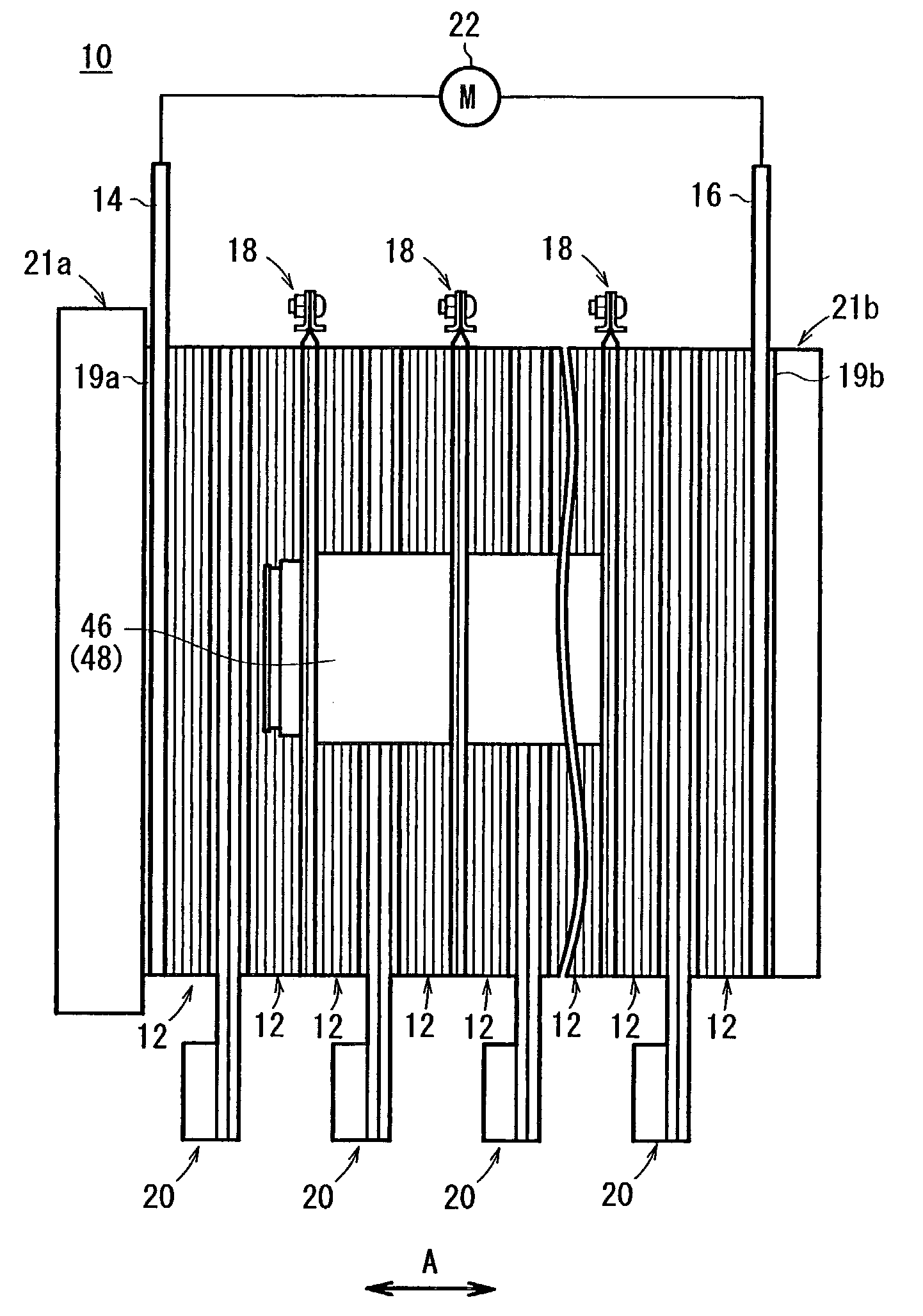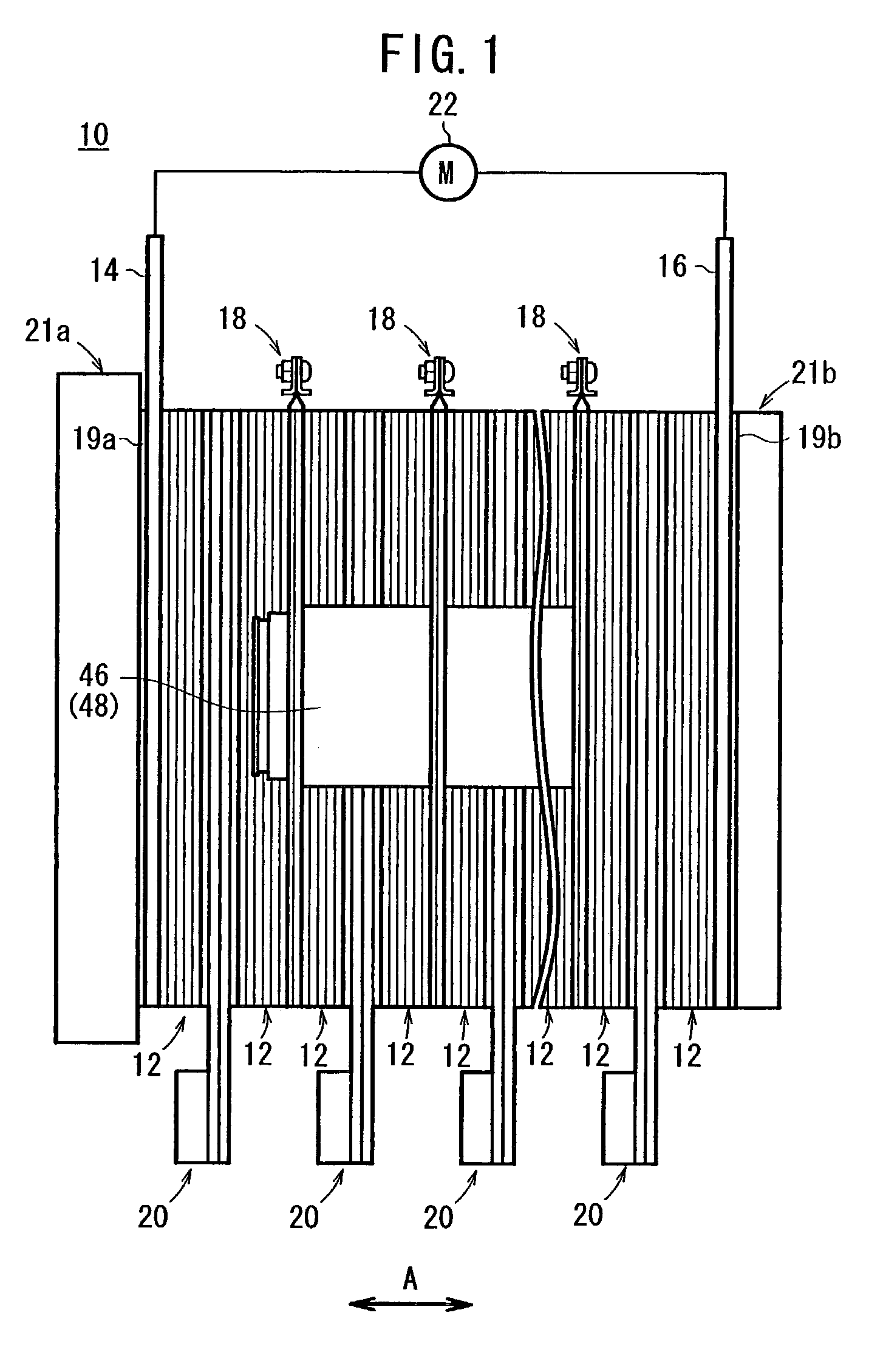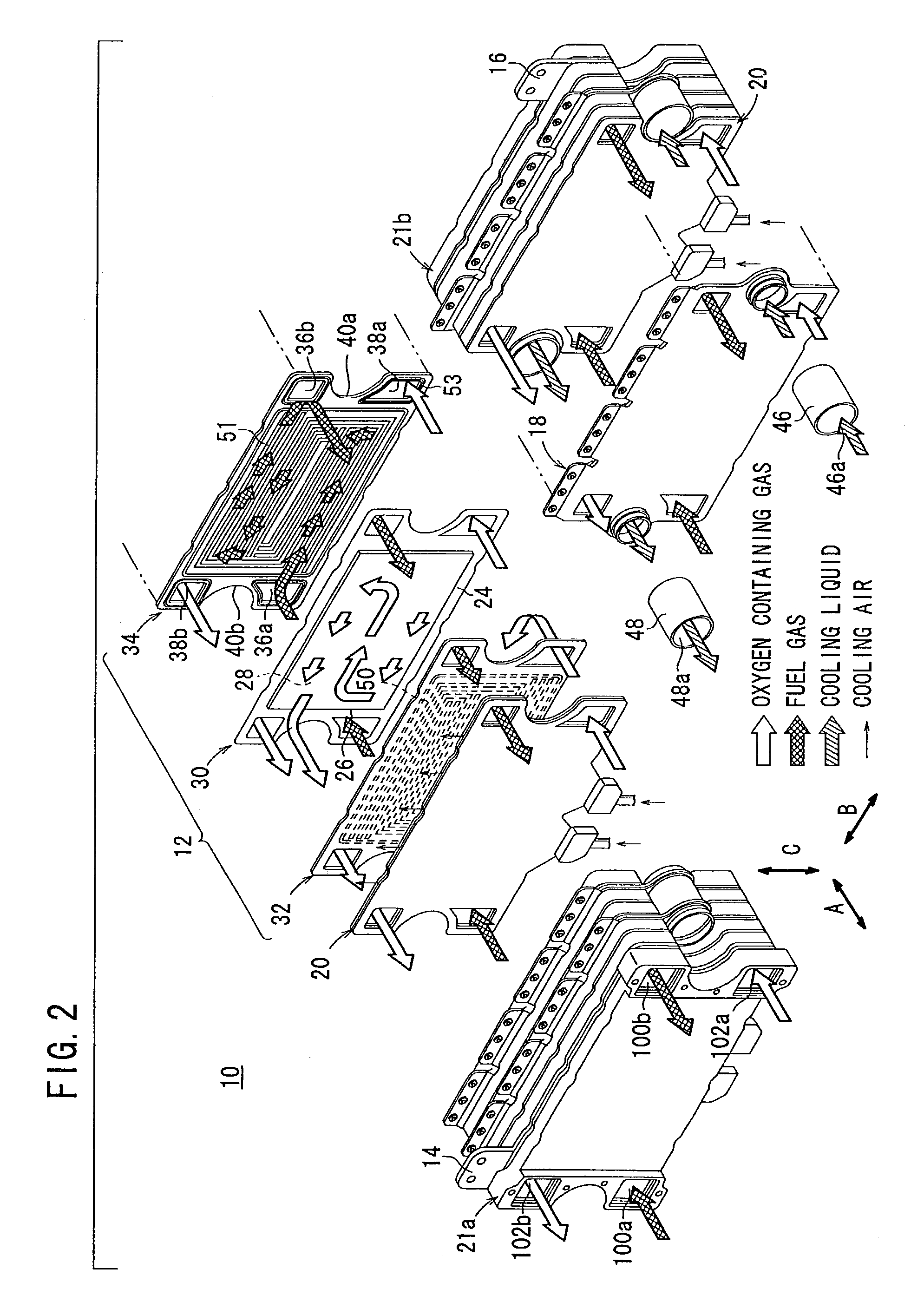Fuel cell stack
a fuel cell and stack technology, applied in the field of fuel cell stacks, can solve the problems of degrading the power generation performance of the overall fuel cell stack, metal contamination of coolant, electron leakage to the coolant passage or the radiator, etc., and achieves the effect of maintaining the power generation performance and simple and compact structur
- Summary
- Abstract
- Description
- Claims
- Application Information
AI Technical Summary
Benefits of technology
Problems solved by technology
Method used
Image
Examples
first embodiment
[0040]FIG. 1 is a side view schematically showing a fuel cell stack 10 according to the present invention. FIG. 2 is an exploded perspective view showing the fuel cell stack 10. FIG. 3 is an enlarged view showing main components of the fuel cell stack 10.
[0041]The fuel cell stack 10 is formed by stacking a predetermined number of power generation cells 12 in a stacking direction indicated by an arrow A.
[0042]Terminal plates 14, 16 are provided on the outside of outermost power generation cells 12 in the stacking direction. The terminal plates 14, 16 are connected to the power generation cells 12 electrically. A predetermined number of first cooling cells 18 and second cooling cells 20 are interposed between the terminal plates 14, 16. The first cooling cells 18 and the second cooling cells 20 are arranged alternately. A predetermined number of the power generation cells 12 are interposed between the first cooling cell 18 and the second cooling cell 20.
[0043]Insulator sheets 19a, 19b...
second embodiment
[0103]In the second embodiment, each of second cooling cells 20 is interposed between adjacent first cooling cells 18. Specifically, as shown in FIGS. 9 and 10, the second cooling cell 20 is not interposed between the terminal plate 14 of the fuel cell stack 160 and an outermost first cooling cell 18, and between the terminal plate 16 of the fuel cell stack 160 and the other outermost first cooling cell 18. The second cooling cells 20 are disposed only centrally between the adjacent first cooling cells 18. Ten power generation cells 12 are interposed between the adjacent first cooling cells 18, and the second cooling cell 20 is interposed between the adjacent first cooling cells 18 at intervals of five power generation cells 12. Five power generation cells 12 are interposed between the terminal plate 14 and the first cooling cell 18 adjacent to the terminal plate 14. Likewise, five power generation cells 12 are interposed between the terminal plate 16 and the first cooling cell 18 a...
third embodiment
[0106]FIG. 11 is a side view schematically showing a fuel cell stack 170 according to the present invention.
[0107]In the fuel cells stack 170, third cooling cells 172 are provided outside the terminal plates 14, 16 oppositely to power generation cells 12. Specifically, insulator sheets 19a, 19b are provided on the terminal plates 14, 16, and the third cooling cells 172 are disposed on the insulator sheets 19a, 19b. Thermal insulators 174 are disposed on the third cooling cells 172, and end plates 21a, 21b are disposed on the thermal insulators 174.
[0108]The third cooling cells 172 are insulated from the terminal plates 14, 16 by the insulator sheets 19a, 19b. Since the third cooling cells 172 do not connect the power generation cells 12 electrically, no conductive plates are needed for the third cooling cells 172. As shown in FIG. 12, the third cooling cell 172 has a passage plate 52 and a cover plate 56.
[0109]In the third embodiment, the third cooling cells 172 are provided outside...
PUM
| Property | Measurement | Unit |
|---|---|---|
| temperature | aaaaa | aaaaa |
| temperature | aaaaa | aaaaa |
| current density | aaaaa | aaaaa |
Abstract
Description
Claims
Application Information
 Login to View More
Login to View More - R&D
- Intellectual Property
- Life Sciences
- Materials
- Tech Scout
- Unparalleled Data Quality
- Higher Quality Content
- 60% Fewer Hallucinations
Browse by: Latest US Patents, China's latest patents, Technical Efficacy Thesaurus, Application Domain, Technology Topic, Popular Technical Reports.
© 2025 PatSnap. All rights reserved.Legal|Privacy policy|Modern Slavery Act Transparency Statement|Sitemap|About US| Contact US: help@patsnap.com



